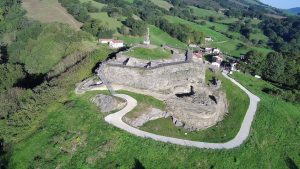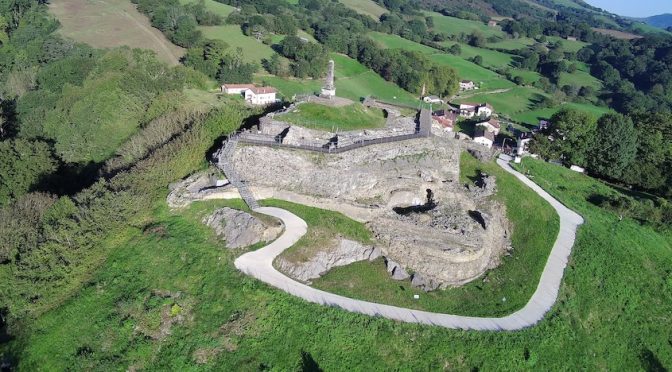The Basque Country has seen more than its fair share of conflict. At the cross roads between the Iberian peninsula and the mainland of Europe, powers were always vying for control even as the Basques themselves tried to maintain some semblance of independence or made alliances with one side or another. The Kingdom of Nafarroa was often at the center of these conflicts, with the Fortress of Amaiur, amongst others, being one of the last holdouts against the conquering invaders.

- The name of the fortress and town come from the Basque word Amaia, which means boundary or limit. The town is first attested in documents from the twelfth century, where it is noted as a noble district of the Kingdom of Nafarroa.
- The fortress was built sometime in the twelfth century and became one of the most important strongholds of the Kingdom of Nafarroa. Indeed, it was one of the last points of resistance in the conquest of the Kingdom. Castilla invaded Nafarroa in July, 1512, and quickly took Pamplona with little resistance. Castilian envoys were sent to the primary fortresses of the region demanding their surrender. Several, including Amaiur, refused. However, by August, most of the rest of Iberian Nafarroa – the part of Nafarroa in the Iberian peninsula – had fallen.
- After at least one failed attempt at reconquering Nafarroa, King Henry II of Nafarroa led another attempt, this one successful, and by May, 1521, all of Nafarroa had been reconquered. However, the victory was short-lived as Castilla, having just put down another revolt, counterattacked. Henry’s forces were defeated in the Battle of Esquiroz in June, 1521.
- Henry tried one more time, sending forces in September. They laid siege to the fortress at Amaiur, and the Castilians left in exchange for free passage to Castilla. Again, Castilla responded, with forces from Bizkaia, Gipuzkoa, and Nafarroa itself along with Castilla and Aragon. The Fortress of Amaiur, the last bastion of Nafarroa, fell on July 19, 1522. It had been defended by 200 knights. 39 survived and were taken prisoner to Pamplona. One of those defenders was Francis Xavier.
- Amaiur, or Maya as it is known in Spanish (officially, the town is called Amaiur/Maya today), was also the site of a battle during the Peninsular War. On July 25, 1813, French troops attacked the British forces stationed in Maya. In the end, while the French outnumber the British, thanks in part to reinforcements, the British were able to escape.
- The fortress now stands in ruins, destroyed in the Battle of Amaiur in 1522. In 1922, a monument to the defenders was established, which was blown up in 1931. It was re-erected in 1982. In 2007, the city installed a monument to the Unknown Resistant. All of these are in recognition to those that fought for Nafarroa’s independence against Castilla.
A full list of all of Buber’s Basque Facts of the Week can be found in the Archive.
Primary sources: Spanish conquest of Iberian Navarre, Wikipedia; Amaiur-Maya, Wikipedia; Maya/Amaiur, Navarra, Senditur.com; Château d’Amaiur, Wikipedia
Discover more from Buber's Basque Page
Subscribe to get the latest posts sent to your email.



When my family traveled from Canada to visit family back in 85, I remember seeing the monument and my father trying to tell us what he could recall of its history. When I went back with my father in 2013, they were in the process of excavating the fortress. I also recall my father telling me about “Napoleon’s Road”. It was a trail that apparently his engineers built to facilitate the retreat back into France. Him and the other smugglers of the Valley used to occasionally walk it on their nightly sojourns into France.
That’s very cool! I’ll have to look into Napoleon’s Road some time. Thanks for sharing!